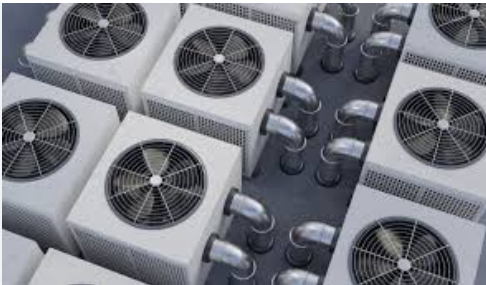Overview : What Are Federal Regulations AC Costs?
Federal Regulations AC Costs refer to the increased price of air conditioning systems in the U.S., triggered by government-imposed energy efficiency standards. Starting in 2023, all new AC units sold in America must meet SEER2 requirements, a more stringent set of energy efficiency standards.
These updated laws aim to reduce energy usage and carbon emissions. However, the unintended side effect is a sharp rise in HVAC system prices—sometimes by as much as 30%.
Across the U.S., homeowners are shocked to see skyrocketing prices on new air conditioning systems. While inflation and labor costs have played a role, the primary culprit is new federal energy regulations introduced in 2023. These rules, designed to increase HVAC efficiency and reduce carbon emissions, are inadvertently increasing manufacturing and installation costs—costs that are now being passed on to consumers.
Federal SEER2 Regulations Explained
The Seasonal Energy Efficiency Ratio (SEER) has long been the standard used to rate air conditioners. In January 2023, the Department of Energy introduced SEER2, a more stringent rating system that accounts for real-world HVAC performance.
According to the U.S. Department of Energy (DoE), SEER2 regulations aim to cut household energy usage by over 30% by 2030. While these savings sound promising, the short-term impact on pricing has been profound:
- New units must meet higher efficiency thresholds.
- Older, cheaper models are being phased out.
- Installation methods and components must be upgraded to meet the new standards.
Key Specifications & Impact on New AC Units
Under SEER2, AC units require:
- Thicker insulation
- Variable-speed compressors
- Advanced refrigerant lines
These specifications, while improving performance, have increased unit prices by 15% to 30% depending on the model and region. Manufacturers had to redesign their systems, and installers needed retraining—all of which contributed to the rising Federal Regulations AC Costs.
Top Features Changing in Modern AC Systems
Though pricier, newer AC systems include features that offer long-term value:
- Smart thermostats with Wi-Fi connectivity
- Eco-friendly refrigerants (e.g., R-454B replacing R-410A)
- Improved energy monitoring systems
- Quiet operation motors
These upgrades can reduce monthly utility bills by up to 20%, but homeowners will have to shoulder the upfront investment.
Cost Comparison: Before vs After 2023 Regulations
| Feature | Pre-2023 Units | Post-SEER2 Units |
|---|---|---|
| Average Installation Cost | $5,000 | $6,500–$7,500 |
| Energy Efficiency Rating | 13–14 SEER | 15.2–18 SEER2 |
| Annual Energy Savings | $150–$200 | $300–$500 |
| Estimated ROI Period | 5–7 years | 4–6 years |
The short-term pain of a higher price point is paired with long-term efficiency gains. However, affordability remains a challenge for low-income households.
Technology & Sustainability: The Silver Lining
While the regulations have sparked controversy, they are steering the HVAC industry toward a greener future:
- Reduced greenhouse gas emissions
- Lower energy grid strain during peak summer
- Smaller carbon footprints for households
By 2030, it’s estimated that these changes could prevent up to 150 million metric tons of CO₂ emissions—equivalent to taking 30 million cars off the road.
How It Affects Homeowners & Renters Alike
The cost burden doesn’t fall solely on homeowners. Landlords and property developers are also subject to these new regulations, and they’re increasing rents to offset higher HVAC installation costs.
Many renters across the southern U.S. have reported $50–$100 monthly rent increases in newly constructed or recently upgraded buildings.
FAQs
Q1: What is SEER2, and how is it different from SEER?
SEER2 is a more realistic testing metric that accounts for HVAC performance under actual field conditions, unlike SEER which used lab-based testing.
Q2: Can homeowners still buy older, non-SEER2 units?
In many regions, older models have been banned from sale or installation since January 2023.
Q3: Are there rebates available to offset the higher AC costs?
Yes, the Inflation Reduction Act includes HVAC upgrade rebates. Check with your state energy office or local utility provider.
Q4: Is it worth paying more for a SEER2 unit now?
While the upfront cost is higher, long-term savings on energy bills and improved system durability make it a worthwhile investment.
Final Thoughts
Although the new federal HVAC regulations were implemented with sustainability in mind, they are creating real affordability challenges for many Americans. From higher product and labor costs to rent hikes and energy policy confusion, it’s clear that the federal regulations AC costs issue isn’t going away anytime soon.
As more consumers become aware of these changes, education and financial support—like rebates and incentives—will be vital to ensure a smoother transition toward greener homes.

